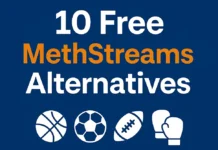Things like a bad internet connection or an error in a device’s name resolution can make a huge difference in email marketing. They can cause your campaigns to arrive late in your customers’ inboxes or fail to arrive at all.
As an email marketer, you need to prevent this from happening by using an SMTP relay. Read on to know more about what SMTP is, its benefits, and other deliverability-boosting strategies.
What Is Email Deliverability?
Email deliverability is the measure of how many of your campaigns successfully reached the intended recipients’ inboxes and how many faced delivery problems. It’s an essential aspect of email marketing to learn because sending campaigns that don’t reach customer inboxes will more likely waste your budget.
1. Use SMTP relay
To successfully deliver your campaigns into your customers’ inboxes in time, you need to send your campaigns using a reliable and healthy network. Using a standard internet connection plus your computer for it will not be enough.
This is because your internet connection may experience downtime or lags and your computer network’s name resolution may not appear trusted to internet and email service providers. Simple Mail Transfer Protocol (SMTP) relay servers use reputable Domain Name Service (DNS) and assume the function of reliable network connectivity and trusted name resolution.
The best part of using SMTP relay is that it helps you reach out to more customers because it has a higher email sending cap than using a standard email service.
2. Prime your IP
As mentioned, ISPs use tools in filtering out spam emails to protect their customers. Even direct campaigns from email marketers like you can fail to reach your customers’ inboxes because of these filters.
To fix this problem, you need to prime your Internet Protocol (IP) first. This is done by sending small batches of campaigns to your highly engaged customers using a dedicated IP address. Your dedicated IP address is either established in your home or office’s internet connection or your computer.
ISPs will then notice your high engagement rates, and that would build your reputation. Once your reputation is high, ISPs will then allow the high-performing campaigns sent from your dedicated IP address to go to your recipients’ inboxes directly.
3. Have a sender policy framework in place
Cybercriminals like spammers always find ways to make their messages reach their victims’ inboxes. One of their strategies is to send spam on behalf of your trusted domain. By setting up your Sender Policy Framework (SPF), you can signal ISPs and ESPs about the IP addresses sent from your domain they should accept.
Without an SPF in place, spammers will keep on using your domain until its reputation is ruined. When this happens, your domain becomes blacklisted, and campaigns sent from it will never reach the intended recipients’ inboxes.
4. Follow a consistent sending schedule
ISPs and ESPs analyze your sending schedules as a way to build your marketer’s identity. If you don’t follow a consistent campaign sending schedule, ISP and ESP spam filter systems will treat your sending behaviour as suspicious.
That, too, can cause your domain, IP, and business email to get blacklisted. To start, pick a particular hour of the day or certain days of the week to send your campaigns and stick to that schedule.
5. Clean your mailing lists
Sending campaigns to inactive, disinterested, opted-out users, spambots, and spam traps can severely ruin your engagement rates. When your engagement rates are low, your IP, domain, and business email address’s reputations are negatively affected, which could lead to a blacklist.
That’s why you should find who and which these threatening emails are and remove them from your mailing list. However, clean your mailing list in a hurry. Separate disinterested and inactive users from the other bad emails first and send re-engagement campaigns.
If they still don’t respond, remove them for good.
6. Separate Your Marketing and Transactional Emails
Transactional emails are more important than marketing emails because they are usually automated, and users need to receive them. Marketing emails have a chance of being ignored, forgotten, or reported for spam. But you can avoid this from happening by getting more clicks and opens. This is done through creating quality, relevant, non-sales content and writing good subject lines.
However, If you use a single mailing stream for both transactional and marketing emails, the alarming engagement rates of marketing emails can affect your overall email marketing network. Users who want to change passwords cannot do so because their transactional email failed to be delivered due to a bad sender’s reputation.
It’s highly suggested that you use two separate SMTP relays and two different computers for transactional and marketing emails.
Over to You
Reasonable deliverability rates are achieved by protecting your IP, domain, and business email address’s reputation. First, you must establish a secure, reliable, and accurate network by using two SMTP relay services: One for transactional emails and one for marketing emails.
The second step is to build your IP’s reputation by following a consistent email sending schedule with a gradual increase of email volume sent. The third step is to set up an SPF authentication for your domain and prevent spammers from destroying its reputation.
Once you’ve done everything, you should keep on monitoring your engagement rates to find out which threatening emails are to be weeded out from your mailing list.




